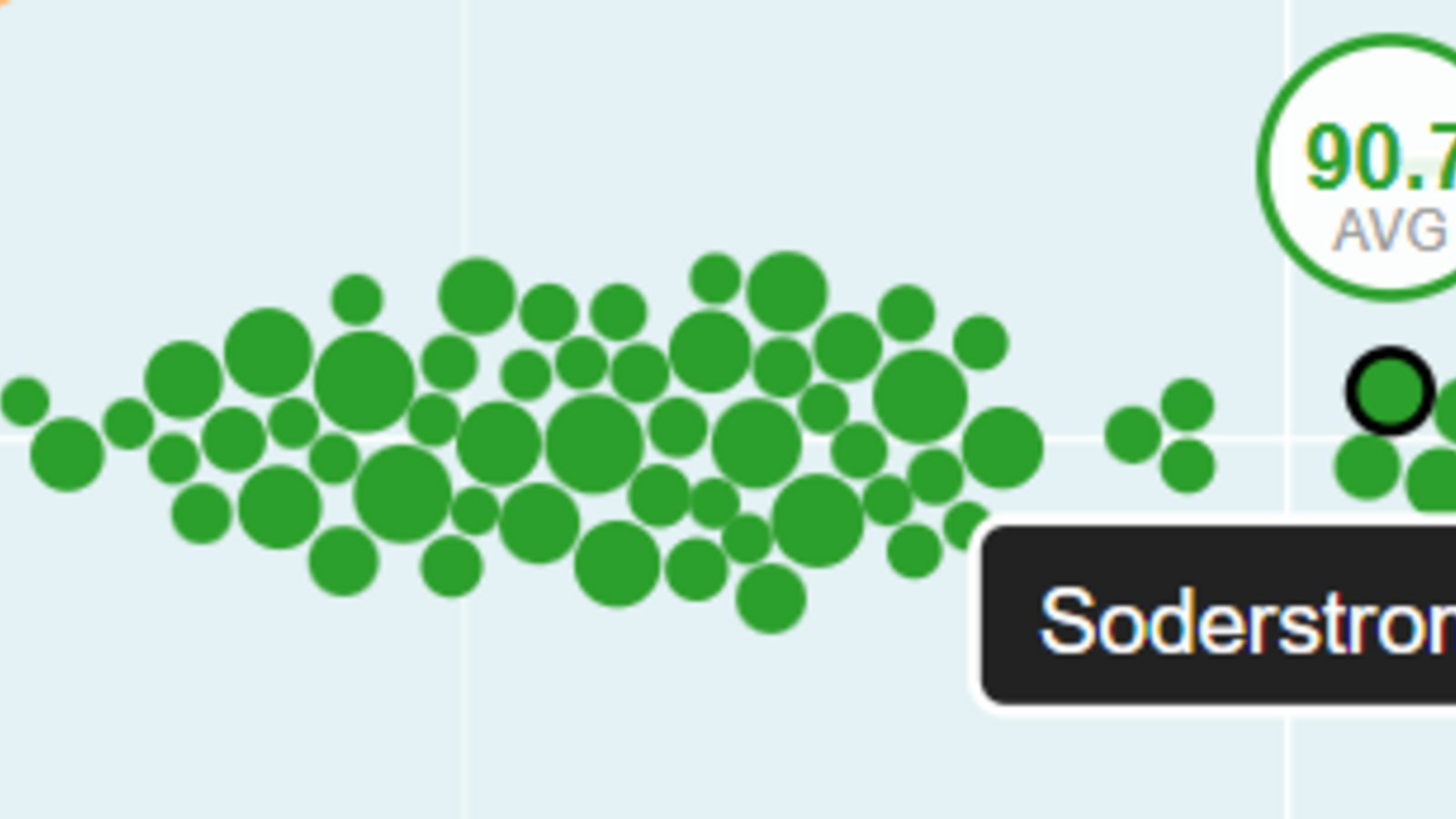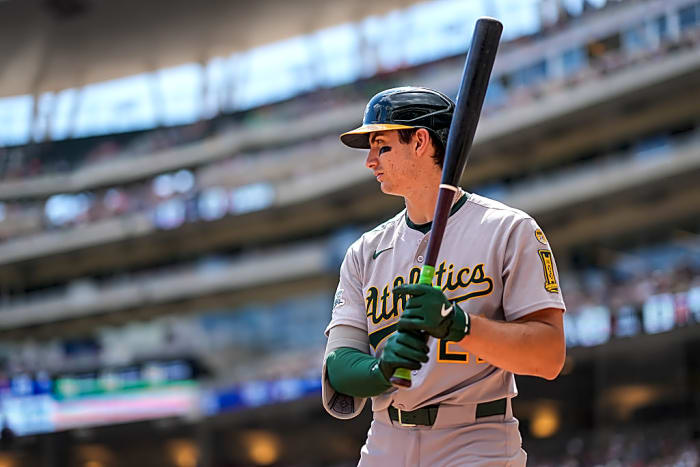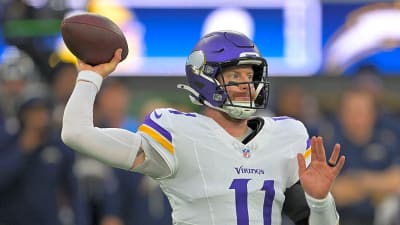
The average baseball fan does not know much about the Athletics. Not only are they never on national television, but their debacle of moving cities, playing in a minor league stadium, and rarely making needle-moving signings hardly demands a whole lot of attention.
Then Nick Kurtz hurt the scene. The 2024 fourth overall pick launched 36 home runs and posted a 170 wRC+ in his first season, mind you in only 117 games, with the Athletics. When Kurtz joined the team after spending the beginning of the season in the minors, many wondered how he would fit in their lineup.
Former top 50 prospect, Tyler Soderstrom, had recently transitioned from behind the plate to first baseball and was penciled in as the first baseman of the future, but that was not the case once Kurtz arrived.
With Brent Rooker handling full-time designated hitter duties to his defensive shortcomings, the next logical move was to once again shift Soderstrom to a new position: left field. Learning on the fly, Soderstrom quickly became comfortable in left and began to excel in his new position ultimately to the point of becoming a Gold Glove finalist.
The 2025 Rawlings Gold Glove Award Finalists – AL Left Field – Steven Kwan, Wyatt Langford, Tyler Soderstrom#RawlingsGoldGloveAwards pic.twitter.com/vx208ROS8N
— Rawlings Baseball (@RawlingsSports) October 15, 2025
Soderstrom’s Athletic Ability Accelerated the Learning Curve
We all know how this typically plays out. When you cannot find a position for a player you usually stick them at first base or in left field. On paper, that looked like the case for Soderstrom, but he’s a much better athlete than you might think.
While not a burner, Soderstrom moves well for his 6-foot-2, 200 pound build. He has enough speed to cover ground in left to prevent extra bases down the line or soft hit balls heading towards the left-center field gap. On ability alone, he has enough to work with to make up for what he lacked in experience.
Of course, raw ability is just one part of the equation. Perhaps even more important is reading the ball off the bat, perfecting your angles, and reacting quickly enough to get to a spot where you are in position to not only field the ball but also be ready to deliver an on time and accurate throw. We all know the initial read and reaction as “jump”.
Tyler Soderstrom, GG finalist.
— Clay Snowden (@clay_snowden2) October 15, 2025
30% catch probability on this one pic.twitter.com/mMwsxs8NET
Traditional broadcast camera angles make it difficult to always see an outfielders jump, but the above video is more impressive than you might think. At 97.8 mph off the bat with a 22 degree launch angle, Soderstrom did not have much room for error.
Because of the lower launch angle Soderstrom’s path had to be precise as he did not have an opportunity to adjust his angle like you would with a higher flyball. Believe it or not, this ball only had a 30% catch probability and Soderstrom made it look easy, traveling 89 feet in less than five seconds to take away extra bases.
The reason it looked so easy was because of is initial read off the bat and quick reaction tracking the ball to perfection. Learning routes and angles on balls that are tailing usually takes time on task and repetitions that Soderstrom was not afforded after being placed in left field abruptly, but he adjusted quickly and the numbers back it up.
Defensive Analytics Back Up His Nomination
In a world filled with stats and analytics accessible to many, it is easy to get bogged down in the minutiae as a new stat seems to appear each day. I get it. Defensive stats also come with a certain degree of question because many trust their eyes more than numbers from a computer. For better or for worse, this is the baseball world we live in and personally, I’m glad they exist.
The two primary defensive stats are Defensive Runs Saved (DRS) and Outs Above Average (OAA). Each have pros and cons, but instead of diving into an explanation that might put you to sleep, I’ll paint the picture in a more digestible way.
Soderstrom posted 10 DRS in his first season playing left field. That is one more than noted great outfielder Julio Rodriguez, tied with Daulton Varsho, and one less than Cody Bellinger. Maikel Garcia, Jose Caballero, and Adley Rutschman were some non-outfielders to post 10 DRS as well. We have a better idea of what level of fielder we think those players are and Soderstrom is sharing real estate on the same board.
For OAA, Soderstrom was worth 5 OAA, one more than Aaron Judge, Parker Meadows, and Cedric Mullins while being one less than Brenton Doyle and Steven Kwan. Very strong company to keep.

Via baseball Savant
Soderstrom also showed off his arm. The graphic above shows arm strength amongst left fielders by how hard, in miles per hour, they throw. Soderstrom is in that second bundle with Alex Verdugo, Austin Hays, and Kyle Stowers.
Soderstrom showed early signs of his arm right off the bat. There was a play two weeks into the experiment where he didn’t take the most natural route but recovered well and delivered a dart to third base to get the runner. That was the moment I knew his transition to left would be possible, but there might be some growing pains. Those pains subsided quicker than I had imagined.

Final Thoughts
When watching Soderstrom this season you could see enough evidence to back up these stats. The flashes were there but I doubt you were watching what you thought would be a Gold Glover. I don’t blame you because I had the same thought.
The improvements he made throughout the season at a position he was unfamiliar was truly impressive. With an offseason to focus on his defense, and more time on task, Soderstrom can become even more of an asset next season.
Do I think he’ll win the Gold Glove? No. I’m surprised he was nominated, but considering the past nominations throughout the years, I really shouldn’t be. At the end of the day, I’m just glad he’s being highlighted for his improvements and hope this nomination makes more people realize how good of a player he really is.
More must-reads:
- World Series Game 4 takeaways: Blue Jays' big inning evens series, Shane Bieber outduels Shohei Ohtani
- World Series takeaways: Shohei Ohtani’s historic night sets stage for Freddie Freeman’s 18th-inning walk-off
- The 'World Series walk-off home runs' quiz
Breaking News
Trending News
Customize Your Newsletter
 +
+
Get the latest news and rumors, customized to your favorite sports and teams. Emailed daily. Always free!








